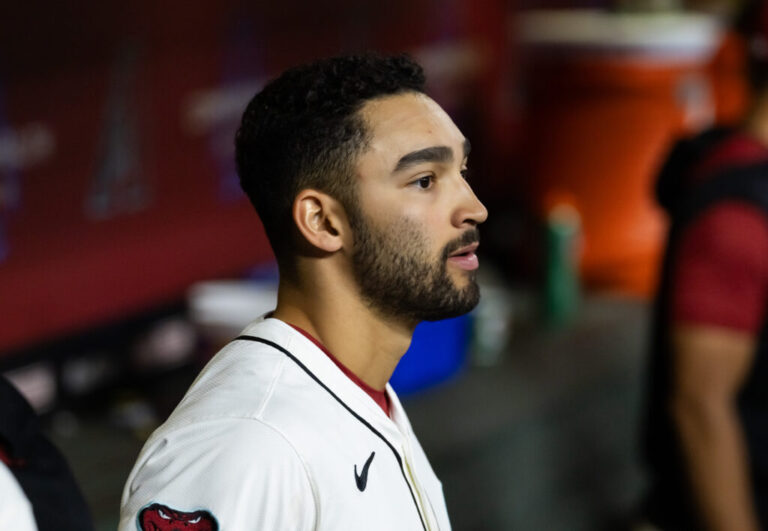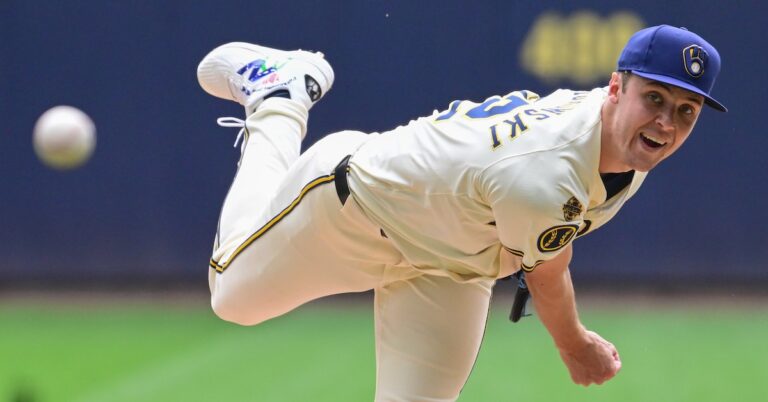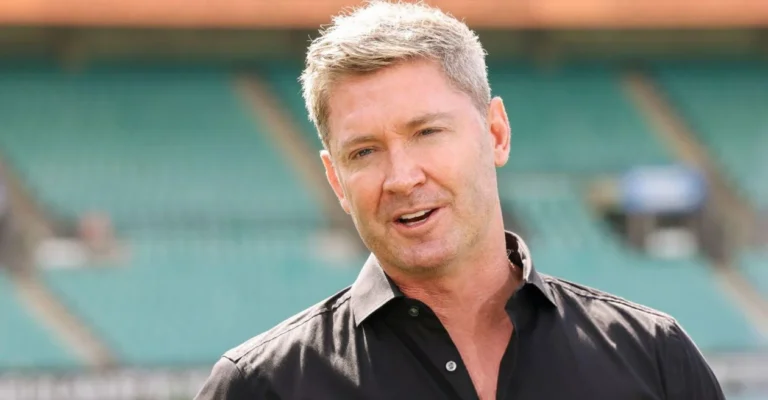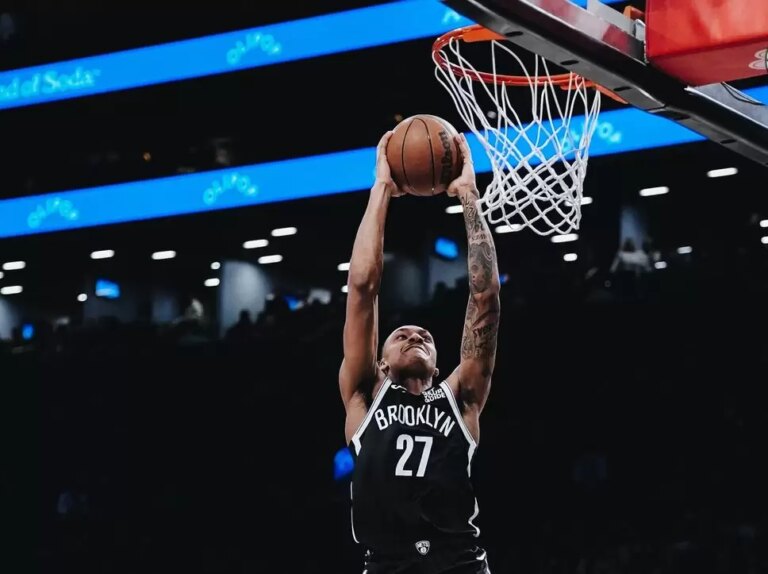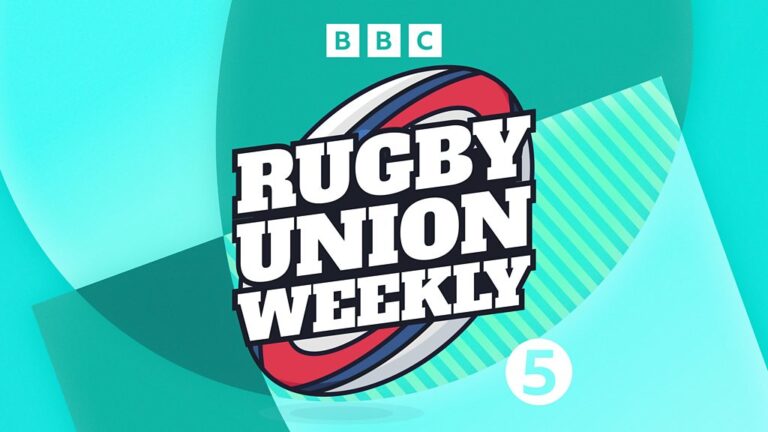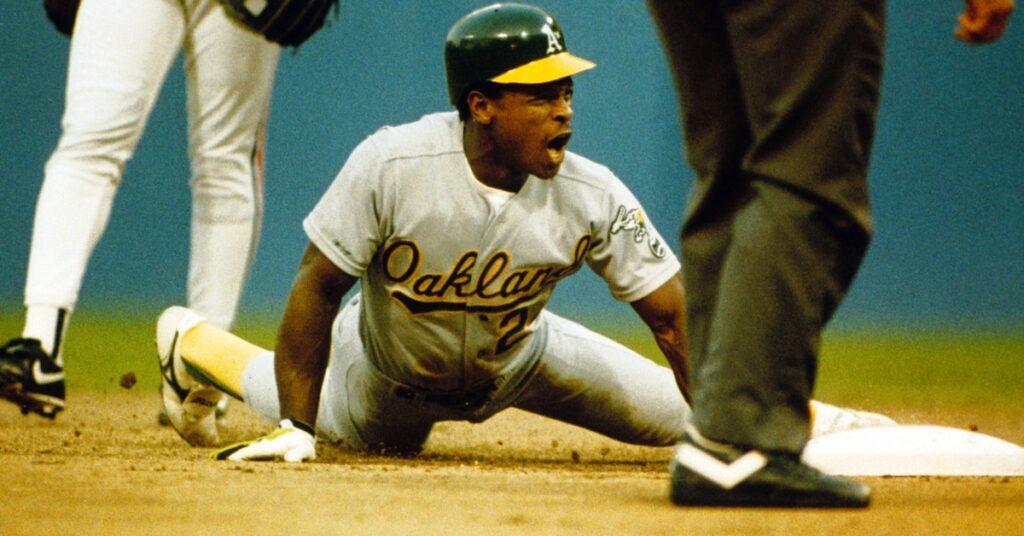

Rickey Henderson had something to offer everyone. He was a Bay Area icon who spent more than half his career wearing the green and gold of the Oakland Athletics, yet he was traded away twice, and spent time with eight other teams scattered from Boston to San Diego, all of them viewing him as the missing piece in their quest for a playoff spot. For fans of a throwback version of baseball that emphasized speed and stolen bases, “The Man of Steal” put up numbers that eclipsed the single-season and career records of Lou Brock and Ty Cobb. To those who viewed baseball through the new-fangled lens of sabermetrics, he was the platonic ideal of a leadoff hitter, an on-base machine who developed considerable power. To critics — including some opponents — he was a showboat as well as a malcontent who complained about being underpaid and wouldn’t take the field due to minor injuries. To admirers, he was baseball’s most electrifying player, a fierce competitor, flamboyant entertainer, and inner-circle Hall of Famer. After a 25-year major league career full of broken records (not to mention the fourth-highest total of games played, ahem), Henderson spent his age-45 and -46 seasons wowing fans in independent leagues, hoping for one last shot at the majors.
It never came, but Henderson’s résumé could have hardly been more complete. A 10-time All-Star, two-time world champion, an MVP and Gold Glove winner, he collected 3,055 hits and set the career records for stolen bases (1,406), runs scored (2,295), and walks (2,190); the last was eclipsed by Barry Bonds three years later, though Henderson still has more unintentional walks (2,129). He also holds the single-season record for stolen bases (130), as well as the single-season and career records for caught stealing (42 and 335, respectively).
“If you could split him in two, you’d have two Hall of Famers. The greatest base stealer of all time, the greatest power/speed combination of all time (except maybe Barry Bonds), the greatest leadoff man of all time,” wrote Bill James for The New Bill James Historical Baseball Abstract in 2001. “Without exaggerating one inch, you could find fifty Hall of Famers who, all taken together, don’t own as many records, and as many important records, as Rickey Henderson.”
Henderson died on December 20 in Oakland due to complications from pneumonia and asthma, according to ESPN’s Howard Bryant, the author of a 2022 biography, Rickey: The Life and Legend of an American Original. Henderson was five days short of his 66th birthday.
Over the course of a major league career that ran — and ran, and ran — from 1979 through 2003, Henderson brought flair to every aspect of his game. A natural lefty, he learned to bat right-handed as a child because that’s what everyone else was doing, and hit from an unorthodox, extreme crouch that made his strike zone “the size of Hitler’s heart,” as the Los Angeles Times’ Jim Murray described it. He made snap catches on routine fly balls, as though he were swatting away pests, and slid headfirst into bases, hitting the dirt “like an airplane coming in for a landing,” as he told Sports Illustrated’s Ron Fimrite.
Sometimes Henderson’s swagger and stylistic flourishes rankled opponents. Henderson got inside their heads, distracting them from the job at hand. In another Fimrite story from earlier that season, he described the origin of his crouch:
I found that if I squatted down real low at the plate… I could see the ball better. I also knew it threw the pitcher off. I found that I could put my weight on my back foot and still turn my hips on the swing. I’m down so low I don’t have much of a strike zone. Sometimes, walking so much even gets me mad. Last year Ed Ott of the Angels got so frustrated because the umpire was calling balls that would’ve been strikes on anybody else that he stood up and shouted at me, “Stand up and hit like a man.” I guess I do that to people.
“There isn’t enough mustard to put on that hot dog,” future Oakland teammate Dennis Eckersley told Sports Illustrated’s Peter Gammons — in admiration.
“Rickey is a once-in-a-lifetime player,” manager Billy Martin wrote of Henderson in his 1987 memoir, Billyball. “You see very few Rickey Hendersons. You might not see another one for fifty years.”
Even beyond the major records he set, Henderson’s numbers are mind-boggling. He led his league in steals 12 times, including seven in a row from 1980 to ’86, and reached 100 steals three times in his first four seasons. He scored 100 or more runs in a season 13 times, tied for second all-time, behind Henry Aaron. He’s fourth in times on base (5,343), behind only Pete Rose, Bonds, and Cobb. Though he led his league in on-base percentage only once, he ranked among his league’s top three nine times, and 16 times he finished within the top 10. Of his 297 homers, a record 81 were leadoff homers. That’s 21 more than the next-highest total now (George Springer’s 60), 37 more than the next-highest total when he last played (Brady Anderson’s 44), and 46 more than the total he originally surpassed for the record in 1989 (Bobby Bonds’ 35).
Because Henderson did so many things so well for so long, he’s 14th among all position players with 111.1 WAR (Baseball Reference version, which will be used throughout this piece) and first with 144 baserunning runs. He ranked among the AL’s top five in WAR nine times from 1980 to ’90, leading the league three times and finishing in a virtual tie for first once; in one of his two seasons outside the top five during that run, he placed ninth. He owns the highest WAR of anyone who debuted between Aaron in 1954 and Barry Bonds in ’86, higher than 38 Hall of Famers, including Frank Robinson, Mike Schmidt, Joe Morgan, Carl Yastrzemski, Cal Ripken Jr., and Roberto Clemente.
Beyond the staggering statistics is the lore. Henderson has more stories connected to his performance and persona than just about any player this side of Babe Ruth. Whether they were tales of superhuman feats, comic anecdotes, simple malapropisms, or examples of him referring to himself in the third person, not all of them are true. Some are too good to check — the legend of Rickey Being Rickey has been printed many times over.
Take the famous one about John Olerud, who wore a helmet in the field as Henderson’s teammate with the Mets in 1999 and Mariners in 2000, a precaution related to a brain aneurysm he suffered in college. “I played with a guy just like that with the Mets,” Henderson is said to have told Olerud upon reuniting with him in Seattle. Bryant traced that particular tale to former Mets teammates Robin Ventura, Todd Zeile, and Al Leiter, who were having a good laugh while musing about how far it could reach. The story got passed through clubhouse personnel in New York and Seattle until it became ubiquitous.
Regarding Henderson’s penchant for referring himself in the third person, often he was verbalizing his interior monologue. As he explained in 2003, “I use it to remind myself, like, ‘Rickey, what you doing, you stupid…’ I’m just scolding myself.” In one famous story, A’s teammate Terry Steinbach discovered him in the clubhouse while the national anthem was playing, naked and psyching himself up. “Rickey’s gonna have a game… Rickey’s gonna have a good day… Rickey’s ready to go!”
About 30 seconds before first pitch, Henderson donned his uniform. “He walks down the tunnel,” Steinbach recalled “Gets his bat. Hits a home run.”
As for the oft-told tale of Henderson framing one of his huge paychecks — said to be a $1 million signing bonus from the Yankees in some tellings, from the A’s in others — instead of cashing it: “The story felt apocryphal, an ingredient seamlessly blended into the mythical gumbo of Rickey’s life,” wrote Bryant. “Rickey stories that were too good to be true were also too good to dismiss, too good to forget. Even if they never happened, they could have happened.” This one, which apparently was true, had to do with Henderson exerting some financial discipline; if the check was under glass, he wouldn’t spend the money.
Henderson was frugal, but also generous. He hoarded his meal money in a shoebox, then gave the cash away to children from his North Oakland neighborhood who were doing well in school. In his memoir Long Shot, former Mets teammate Mike Piazza wrote about Henderson’s participation in deciding playoff shares:
“Rickey was the most generous guy I ever played with, and whenever the discussion came around to what we should give one of the fringe people — whether it was a minor leaguer who came up for a few days or the parking lot attendant — Rickey would shout out, ‘Full share!’ We’d argue for a while and he’d say, ‘Fuck that! You can change somebody’s life!’”
For as amusing and endearing as the lore may be, some stories play into disparaging stereotypes. “Rickey was bizarre and funny and aloof, but there was a difference between Rickey being on his own program and the fictionalized minstrel stories that diminished him and used him to reinforce the Black stereotypes so many had spent their careers trying to shed,” wrote Bryant, himself the rare Black writer in a press corps that was very white during Henderson’s heyday. Bryant identified an early reading disability and then Henderson’s supreme athletic prowess as both contributing to a less-than-rigorous education that was at the root of some of his misunderstandings.
Rickey Nelson Henley Henderson was born on December 25, 1958 in Chicago, in the back seat of a car en route to the hospital. His father, John Henley, was out gambling at the time, and not present for his birth; he left the family before Rickey turned three and died in a car accident 10 years later. His mother, Bobbie Earl Henley, was just 19 years old when Rickey was born and already a mother of three. She named her fourth child after clean-cut white singer/actor Ricky Nelson. When her husband left, Bobbie took Rickey and her other children to Pine Bluff, Arkansas, where she had grown up. When Rickey was seven, the family moved to Oakland; Bobbie married Paul Henderson when Rickey was a teen, and he took his stepfather’s last name. Bobbie worked as a registered nurse, while Paul worked for General Motors.
As a child, Henderson’s first love was football, so much so that he was known as “The Football Kid,” more attentive to the Oakland Raiders than to the A’s even while the latter was in the midst of its 1972–74 three peat. Baseball was something he tolerated, serving as a catch partner for his older brother Tyrone. He played running back and idolized O.J. Simpson. Even at 5-foot-10 and 175 pounds while at Oakland Technical High School, he enjoyed the contact aspect of the sport, and received over 100 scholarship letters from college programs. Basketball and baseball were placeholders, ways for him to stay in shape in the offseason. That changed once a guidance counselor at his school, Tommie Wilkerson, recruited him for a baseball tournament team and offered to pay him a quarter for every hit and every stolen base — an offer she made to other players as well in order to give them some spending money and keep them under supervision.
After skipping from eighth grade to 10th, Henderson initially was cut from Oakland Tech’s varsity team after its new coach, Bob Cryer, essentially picked his squad by sight, but bypassed the 15-year-old future Hall of Famer. “You must not know who I am,” a brazen Henderson told Cryer, and his teammates concurred, pleading with the new coach to no avail. Henderson got everyone’s attention by sprinting from the junior varsity outfield to the varsity one (they were back-to-back) to catch fly balls during scrimmages, then talked his way into taking batting practice with the varsity and hit rocket after rocket. He made the team.
Henderson ended up pursuing baseball out of high school. “My mother made the decision,” he told Inside Sports’ Glenn Dickey in 1991. “I loved football; I thought I could be an All-American, but she thought baseball was better for me. I gave her the choice to make and she chose baseball.” Football’s potential for debilitating injuries was one reason Bobbie favored baseball; concern over whether her son could keep his grades up and remain academically eligible for Division I football was another. On the advice of scout Jim Guinn, who saw Henderson play 20 times as a senior and outlasted other scouts who paid less attention, the A’s drafted him in the fourth round in 1976. Even at 17, Henderson had his sights set high, telling Guinn, “I want to be the greatest basestealer of all time.”
A week after Henderson was drafted, skinflint owner Charlie Finley attempted to dismantle his dynasty ahead of the dawn of free agency by trading Vida Blue, Rollie Fingers, and Joe Rudi in cash deals that commissioner Bowie Kuhn soon rejected. Henderson and his advisors sought a $100,000 bonus, but he signed for just a $10,000 bonus, all that farm director Syd Thrift claimed to have in his budget for the pick. The slight would not be forgotten.
Henderson began his professional career by hitting .336/.463/.521 with 29 steals in 46 games at Low-A Boise, but it was at his next stop, at Low-A Modesto in 1977, where he really began to turn heads. Manager Tom Trebelhorn, who had also overseen him in Boise, not only gave him the green light but helped him become a student of the art of basestealing. “We used to sit up and look at films. I looked at Lou Brock and Ty Cobb, and those were kind of my idols,” Henderson told Dickey. Trebelhorn “was probably the biggest influence in my becoming a great basestealer. He took the time to teach me.” On a team that ran wild, stealing 372 bases (!), Henderson stole 95, walked 104 times, and hit 11 homers while batting .345/.466/.468. On May 26, 1977, the team stole 15 bases, with Henderson tying a league record by swiping seven himself.
At Double-A Jersey City in 1978, Henderson went homerless and slugged just .358, but still stole 81 bases. The next year, he lasted just 71 games at Triple-A Ogden (where this scribe first saw him play), hitting .309/.430/.448 with 44 steals before getting called up by the A’s. He debuted on June 24, 1979 against the Rangers, leading off with a hustle double off John Henry Johnson in his first plate appearance; he was thrown out at home, but later added a single and his first stolen base (against six-time Gold Glove-winning catcher Jim Sundberg, no less) in the next one.
Shorn of their stars, the A’s were on their way to losing 108 games under manager Jim Marshall, though a young nucleus that included center fielder Dwayne Murphy and right fielder Tony Armas was taking shape. The 20-year-old Hernderson hit a modest .274/.338/.336 (88 OPS+) as a rookie, stealing 33 bases.
The next year, Martin took over in the dugout, bringing with him an aggressive brand of baseball that was well suited to Henderson’s game: Billyball. But Martin dictated when Henderson ran. Henderson stole only seven bases in April, but added 16 in May, including a 13-for-13 streak, and was off to the races. He made his first All-Star team, walked 117 times thanks to his impossibly small strike zone, and hit .303/.420/.399 (135 OPS+) with 8.8 WAR, good for second in the league. He entered September with 66 steals, but then Martin, in an attempt to earn his new star’s trust, let him run wild; he went 34-for-41 in steals that month, breaking Cobb’s American League record of 92 and finishing with an even 100. With the five-man rotation of Rick Langford, Mike Norris, Matt Keough, Steve McCatty, and Brian Kingman combining for an astounding 93 complete games and each throwing over 210 innings, the A’s improved to 83-79.
With a raise from $30,000 to $185,000, and his first endorsement contract, from Japanese equipment maker Mizuno, Henderson’s star was on the rise. In the strike-torn 1981 season, he led the A’s to a 37-23 first-half record, stole an AL-high 56 bases, hit .319/.408/.437 (151 OPS+) with 6.7 WAR (virtually tied with Dwight Evans for the league lead), and won his only Gold Glove. The A’s swept the AL West’s second-half winners, the Royals, in a three-game Division Series, but were swept by the Yankees in a three-game ALCS; though Henderson hit .364/.417/.727 in the latter series, he didn’t score any runs.
Martin began treating an understandably wary Henderson like a favorite son, eating and drinking with him and filling the father-figure void in his life; their closeness bothered teammates. Henderson was voted into the AL All-Star lineup and set a new record with 130 steals.
Sports Illustrated put him on the cover of its September 6, 1982 issue. In the accompanying feature, about Henderson’s breaking Brock’s single-season record, Fimrite wrote:
There may be faster men in the big leagues — Willie Wilson? Kirk Gibson? Tim Raines? — but none reaches maximum speed quicker than Henderson, who needs but two steps to do so, and none hits the base with such force. Henderson gives the appearance of gaining speed with his ferocious headfirst slides which, were it not for the base itself, might carry him to or through the fences. “Henderson comes in belly-first, bent on busting right through you,” California manager Gene Mauch says. “Most runners who dive want to touch the base with their hands. Rickey wants to slide through and let his belly stop him on the base.”
Alas, despite Henderson’s heroics, the overworked A’s starters crashed, the team sank to 68-94, and Martin got the axe, in part because the Yankees wanted him back for what would be his third stint in their dugout. Henderson spent two more years on sub-.500 A’s teams under Steve Boros and Jackie Moore, dazzling fans and growing increasingly expensive. He had beaten the A’s in arbitration prior to the 1982 season, earning a rase from $185,000 to $535,000, but lost ahead of the ’84 season, settling for $950,000 and receiving a deluge of negative press for having the temerity to want more ($1.2 million in this case), for being too focused on his statistics, for taking too many day games off after night games, and for generally marching to the beat of his own drum. Sometimes the jibes were anonymous, but some were on the record. Via Sports Illustrated’s Henry Hecht:
“[W]hen he lost last season and had to struggle along with a $950,000 salary, he let the decision affect his play. Quite simply, he dogged it at times, and of the 20 games he missed, probably half were for no apparent reason. According to teammate Steve McCatty, “One game he didn’t play he spent the whole time in street clothes playing cards. When this guy takes a day off, he takes it literally.”
With his free agency a year away, A’s owner Roy Eisenstadt and general manager Sandy Alderson decided to trade Henderson. With Martin — then an advisor for the Yankees, having been canned as manager after the 1983 season — working back-channel to pitch Henderson on New York, the A’s struck a five-for-one deal with the Yankees in early December, with pitchers Tim Birstas, Jay Howell, Jose Rijo, and Eric Plunk, plus outfielder Stan Javier heading to Oakland. The Yankees then hammered out a five-year, $8.6 million extension for Henderson, and moved him into center field, a position he’d had to yield to the defensively superior Murphy in Oakland.
“People say I’m a showman because of the style I play,” Henderson told reporters during spring training. “I like to make the people happy. I like to give them their money’s worth.”
When the Yankees started the 1985 season 6-10, owner George Steinbrenner fired manager Yogi Berra and… replaced him with Martin. The 26-year-old Henderson turned in a stellar campaign, hitting .314/.419/.516 (157 OPS+) with 80 steals in 90 attempts. With assistant hitting coach Willie Horton counseling him to swing with more of an uppercut, he also hit 24 home runs, besting his previous career high of 16 set just the year before. He scored 146 runs, the majors’ highest total since Ted Williams scored 150 in 1949, and led the AL with 9.9 WAR. Yet he finished third in the MVP voting, with teammate Don Mattingly’s 35 homers and 145 RBI getting the glory. The Yankees won 97 games, but an eight-game mid-September losing streak cost them their chance to catch the Blue Jays, who’d held at least a share of the AL East lead from May 12 onward. Martin again lost his job, in part due to his September 22 barroom brawl with pitcher Ed Whitson, who broke the manager’s arm.
Despite his performance, Henderson’s lack of deference to the New York media (nearly all white) and the Yankees Way — not to mention Steinbrenner’s willingness to use the media to goad even his best players — made his time with the Yankees tumultuous. With Lou Piniella taking over as manager, Henderson set another career high with 28 homers, pairing it with 87 steals and scoring 130 times despite slumping to .263/.358/.469 (125 OPS+) as the team went 90-72, five games short of the Red Sox. Henderson’s slump was exacerbated by umpires pushing back against his constant complaints about the strike zone, with one (Jim McKean) even telling Gammons that umpires were calling strikes defined not by Henderson’s crouch, “but by where he stands when he hits the ball. ‘A lot of people have thought we should have done that years ago,’” said McKean. The press took aim at Henderson’s snap catches as showboating, contrasting them with Willie Mays’ basket catches as though Mays hadn’t endured similar criticism of his style.
Things really began to fall apart in New York when Henderson was limited to 95 games in 1987 due to a recurrent right hamstring strain; Steinbrenner even quoted Piniella as saying that Henderson was “jaking it,” exaggerating his injury, though an MRI eventually confirmed the severity of the strain. “Wherever the word came from, it finished Lou with Rickey — but it also finished Rickey with the writers and parts of the fan base,” wrote Bryant. Henderson continued to play at a high level despite slipping to six homers in 1988, his age-30 season; his 6.3 WAR was still good for fifth in the league, and his 93 stolen bases (in just 106 attempts) were his highest total since 1983.
Henderson entered 1989, the final season of his contract, with the team in disarray; in the wake of an 85-76 finish, Steinbrenner was open to the Yankees trading everyone, including Mattingly and Dave Winfield (whom he’d never liked) — as well as Henderson, despite his no-trade clause. New manager Dallas Green, a notoriously old-school hardass, made short work of alienating Henderson by telling the writers, “Maybe Rickey can’t read,” when he didn’t report for spring training on time. When Henderson and the team both started slowly, the Yankees renewed their efforts to trade him, but he rejected a potential deal to the Giants, who wanted him to bat fifth and play right field. He told Thrift — by then the acting GM of the Yankees — that he would only accept a deal to the A’s. On June 21, 1989, he got his wish, returning to Oakland for Plunk, pitcher Greg Cadaret, and outfielder Luis Polonia, the latter of whom was arrested for (and later convicted of) having sex with a 15-year-old girl two months after the trade.
Green didn’t make it through the season, while the green-and-gold got the last laugh. Under manager Tony La Russa, the A’s were by this point a powerhouse, led by sluggers Jose Canseco and Mark McGwire and pitcher Dave Stewart. They had won their first pennant in 13 years in 1988, but were upset by the Dodgers in the World Series. Henderson delivered 5.1 WAR in just 85 games after the 1989 trade, and led the league with 8.7 WAR, 113 runs scored, and 77 steals. The A’s won the AL West, and in the ALCS against the Blue Jays, Henderson dominated. He reached base four times and stole four times in a 6-3 win in Game 2, homered twice and drove in four runs against Mike Flanagan in a 6-5 win in Game 4, and scored the first run and tripled in the second inning against Dave Stieb in Game 5; he was named the series MVP. He went 9-for-19 with an .895 slugging percentage in the World Series, a four-game sweep of the Giants that was interrupted for 11 days by the Loma Prieta earthquake.
Before the end of November, the A’s re-signed Henderson to a four-year, $12 million contract that made him the game’s highest-paid player and also included another no-trade clause. But within 48 hours of that agreement, Mark Langston’s five-year, $16 million deal with the Angels cost Henderson that status, and a flurry of other deals bumped him further down the pecking order; even on his own team, Stewart and Canseco soon inked more lucrative extensions. Though irked by the turn of events, Henderson put together an epic season in 1990, hitting .325/.439/.577 with 28 home runs, leading the league in OBP, OPS+ (189), runs (119), steals (65), and WAR (9.9) — all in just 136 games. On May 29, 1990, he stole his 893rd base, surpassing Cobb’s AL record. He made the All-Star team and edged Cecil Fielder in the MVP voting. The A’s won 103 games and the AL West, then swept the Red Sox in the ALCS before being swept by the Reds in the World Series.
Henderson, now 32, entered the 1991 season with 936 career steals, two shy of Brock’s major league record; he had been the fastest to 400, 500, 600, 700, 800, and 900 stolen bases. His own body intervened; he stole just two bases in April while missing half the month due to a right calf strain. On May 1, 1991, with Brock in attendance at the Oakland Coliseum, Henderson stole third base against the Yankees. He uprooted the bag in celebration and play was stopped so he could address the crowd. After the perfunctory thank yous, he said, “Lou Brock was the symbol of basestealing, but today I’m the greatest of all time.” Rickey being Rickey.
Henderson led the AL in steals with 58, and he also made his final All-Star team. The A’s missed the playoffs that year but returned in 1992; Henderson, who played in just 117 games due to injuries, still produced 5.6 WAR. He reached 5.0 WAR for the final time in 1993, but did so while splitting his season between the A’s and Blue Jays, who acquired him for Steve Karsay and a player to be named later (Jose Herrera) on July 31. Henderson finished the season with a .289/.432/.474 (148 OPS+) slash line, 21 homers, and 53 steals despite scuffling after the trade and into the postseason. His big October highlight came in the eighth inning of Game 4 of the World Series against the Phillies. Facing Mitch Williams with the bases loaded, he singled in two runs to trim the lead to 14-13, then scored the decisive run on Devon White’s triple. The Blue Jays won in six games, and Henderson had his second World Series ring.
Despite being traded by the A’s during the 1993 season, Henderson returned to Oakland as a free agent on a two-year, $8.6 million deal before the ’94 campaign. It would be the last time he’d spend back-to-back full seasons with the same team, and even in this stint, that distinction came with the asterisk of the 1994 players’ strike and ’95 lockout. In 199 games across the two campaigns, he compiled 6.4 WAR, but the A’s were now in a rebuilding phase, and his relationship with La Russa had frayed. Days after his 37th birthday, Henderson signed a two-year, $4 million deal with the Padres, taking him to the NL for the first time. He spent all of 1996 with San Diego, helping the Padres win the NL West, but on August 13, 1997, he was sent to the Angels in a waiver-period deal. He returned to Oakland as a 39-year-old in 1998, became the oldest player to lead a league in steals (66), and then was on his merry way to the Mets (1999-2000), Mariners (2000), Padres again (’01), Red Sox (’02), and Dodgers (’03). By far the best of those seasons was his first in New York, when he hit .315/.423/.466 (128 OPS+) with 12 homers and 37 steals while helping the team come within two wins of a trip to the World Series.
Henderson’s 2001 season, which began with a mid-March minor league deal with the Padres, was full of milestones. On April 26, 2001, he broke Ruth’s record with his 2,063rd walk, against the Phillies’ Jose Mesa. On August 25, he overtook Zack Wheat for the most games played in left field, with 2,329. On October 4, with a wall-scraping home run off the Dodgers’ Luke Prokopec, he overtook Cobb with the 2,246th run scored of his career, punctuating it with a feet-first slide into home plate as his teammates surrounded him. Tony Gwynn then presented him with a gold-plated replica of home plate.
“Scoring so many runs, it’s not just an individual record. It’s a record that you’ve got to have your teammates help you out,” Henderson said afterward. Three days later, with a double off the Rockies’ John Thomson, he joined the 3,000 hit club.
If time didn’t exactly heal all of Henderson’s wounds, both he and the public attitude toward him softened considerably by the end of his career. The players and media whom he’d rubbed the wrong way with his on-field antics and clubhouse foibles had been replaced by a generation that viewed him as a living legend. From Bill James through Baseball Prospectus and the nascent movement in Oakland that would soon be branded “Moneyball” — overseen by former teammate and clubhouse neighbor, Billy Beane — Henderson was venerated by statheads.
Before signing with the Dodgers in 2003, the 44-year-old Henderson played 56 games for the Atlantic League’s Newark Bears, earning $3,000 a month and hitting .339/.493/.591. “If I feel I don’t have the skills, I’d be happy to hang up my shoes and go be with my kids,” he told Sports Illustrated’s Tom Verducci for a feature longer on lore than reporting, one in which Verducci placed Henderson’s surrounding mythology on par with those of Johnny Appleseed and Davy Crockett. “But I know I have the skill. The speed guys who can score runs? I think I’m better than the guys in the major leagues. Will I get the chance?”
After playing sparingly for the Dodgers, Henderson returned to Newark in 2004, then returned to the West Coast to play for the San Diego Surf Dawgs of the independent Golden League, whom he helped to a championship in ’05. His playing career more or less met its end when he accepted a job as a special instructor for the Mets for 2006. There, he helped José Reyes improve as a leadoff hitter and basestealer, though during the season he admitted he missed playing. Bypassing an offer from Beane to join the A’s for a one-game farewell, he announced his retirement on July 13, 2007. He spent that year as the Mets’ first base coach, but was not retained for 2008.
In 2009, Henderson was elected to the Baseball Hall of Fame in his first year of eligibility; he received 94.8% of the vote, at the time the 13th-highest share in history but still about three points shy of what the more universally beloved Gwynn received two years earlier. On August 1, the A’s retired his no. 24. He retained visibility within the organization as a special assistant to team president Dave Kaval, and was on hand along with Stewart to throw out a ceremonial first pitch at the A’s final game at the Coliseum on September 26, 2024.
Had Henderson come along in a more recent decade, a peer of Ken Griffey Jr., say, or Bryce Harper, he might have had an easier time gaining acceptance with his colorful style, instead of facing criticism. Certainly, the contracts would have been bigger — imagine Henderson’s deal if he’d hit the market after his 9.9-WAR age-26 season in 1985! Then again, one could sand his edges down only so much without turning him into someone else, without losing the essential drive that made Rickey be Rickey. He contained multitudes, and accomplished enough to fill two Hall of Fame plaques, but he was one of a kind.

